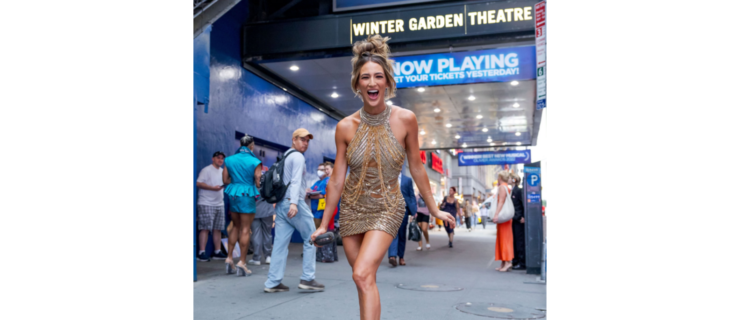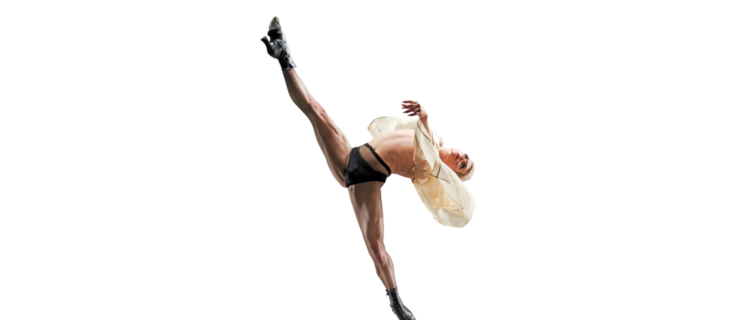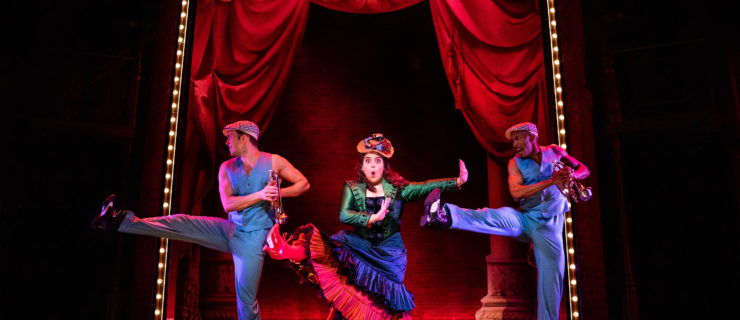How to Prepare for Your First NYC Musical Theater Audition
The pressure of attending your first musical theater audition in the Big Apple can throw even the strongest dancer off her game. We asked industry pros to reflect on their audition experiences, so that you can set yourself up for success.
Do Your Research
It’s crucial to know your audience before even entering the audition space. Isadora Wolfe, cast member and resident director for Punchdrunk’s Sleep No More at the McKittrick Hotel, admits she didn’t anticipate the dynamic ranges of physicality and energy the artistic team would expect from auditionees. “I should have done more research to familiarize myself with Punchdrunk and the work,” she says.
Not only will research prepare you for the choreography, but it’ll also help you determine if the audition is worth your time. “Casting directors are often looking for a specific person,” says Mean Girls‘ Collins Conley. If they want someone petite and you’re 5′ 10″, it may not make sense to audition.
 Collins Conley (third from left) in “Mean Girls” (Joan Marcus, courtesy Boneau/Bryan-Brown)
Collins Conley (third from left) in “Mean Girls” (Joan Marcus, courtesy Boneau/Bryan-Brown)
Finally, research can help keep you from making the ultimate audition blunder: saying or doing something off-putting right in front of the creative team. “A lot of times, the director will be sitting in the back, conspicuously watching auditionees,” says Broadway vet and teacher Josh Assor. “You want them to feel confident that they can spend four weeks in the rehearsal studio with you.”
Network, Network, Network
While musical theater may be one of the only worlds that still holds open calls, there’s still much to be said for being “known” before you walk in. “When I’m working on a new project, I often invite people I know to audition,” Assor says. “Build your dance circle by taking class with the choreographers or offering to assist or do pre-production work.” Rick and Jeff Kuperman, choreographers of Alice by Heart off-Broadway, stress the importance of these relationship-building efforts. “Catching the eye of a director or choreographer happens inside and outside the audition room,” Jeff Kuperman says. “We ask for recommendations for performers all the time, and if your reputation is strong and suggests that you’re a good collaborator, we’ll be excited to work with you.”
 Assor teaching at Broadway Dance Center (Jenna Maslechko, courtesy Broadway Dance Center)
Assor teaching at Broadway Dance Center (Jenna Maslechko, courtesy Broadway Dance Center)
Invest in a Solid Dance Reel
The Kupermans often check for dance reels online if they feel like they need more information. “If you have a reel, especially as we get into final callbacks, we can see you at your best,” Rick Kuperman says. “As for the reel itself, worry less about flashy peripheral cues and focus more on substance. Cool camera angles and impressive sets are nice and all, but not if we can’t see your performance shine through.” Most importantly, make sure your reel is easy to find. Upload it to YouTube and include your full name and the words “dance reel” in the title and search tags. That way, busy directors won’t miss an opportunity to see more of your work.
Anticipate a Long Wait, and Tons of People
Assor and Conley both say that the sheer number of people was the most surprising part of their first NYC auditions. “There were hundreds of girls, and the rooms were so small,” Conley says. “It was shocking.” Unless it’s a non-union audition, Equity dancers always audition first, and if there’s any time left, then non-Equity dancers may get their shot. Conley eventually learned to use the wait to her advantage. “As the room would start to clear out, I would use the extra space to move and keep myself warm,” she says. Wolfe recommends using headphones to tune out all the chatter that can get in your head as you wait to be called.
Don’t Forget About Your Voice
Looking back on her first auditions, Hamilton dancer Karla Garcia wishes she had focused on her singing a bit more. “As dancers, we usually get through the first stage of the audition, often feeling like we nailed it. Then we get to the voice portion and we’re a completely different person. Our confidence is gone,” she says. Garcia recommends finding several songs that you feel comfortable performing.
 “Hamilton” ensemble dancer Karla Garcia (Ted Ely, courtesy Garcia)
“Hamilton” ensemble dancer Karla Garcia (Ted Ely, courtesy Garcia)
Assor tells his students to think about singing as another style of dance that requires the same time and attention. He recommends bringing a songbook to every audition, even if they don’t request it. “You never know if they are going to change their minds and decide they need to hear your voice,” he says.
Dress for Success
“There’s no dress code for musical theater,” Garcia says. “Don’t try to look like everyone else.” Rather than strictly dressing for the part, she recommends wearing whatever will make you feel most comfortable performing the particular movement style of the show, and fits with the style of the choreography. “Maybe you want to wear heels and a skirt for West Side Story and sweatpants for the thrashy movement in Wicked,” she says. “But if you’re not going to vibe in it, don’t wear it.”
One way to ensure you’re dressed for success is to bring two different-looking outfits that you know are comfortable for you. Conley always brings a leotard and a skirt, for more classical combos, and a bra top and leggings, in case she needs to be more grounded.
Know that People Are Going to Know the Choreography Ahead of Time
Particularly when it comes to big, well-known shows, many of your fellow auditionees have likely auditioned for the same show several times. This means they have a certain familiarity with the audition combo, and chances are they’ve practiced it in preparation. “Don’t be surprised if they teach the combo very quickly, and if everyone else seems to be picking it up,” Assor says.
 The company of “Hamilton” (Joan Marcus, courtesy Sam Rudy PR)
The company of “Hamilton” (Joan Marcus, courtesy Sam Rudy PR)
If you have an opportunity to see the show ahead of time, it can give you a sense of the overall movement aesthetic. If anyone in your dance community has auditioned for the show before, ask them what to expect. If they can tell you specifically which dance numbers are taught at auditions, take that information to YouTube. For long-running shows like Wicked, step-by-step YouTube tutorials can be your best friend.
Handle Mistakes with Poise
Show your positive attitude in the way you handle slip-ups. “We look not so much at mistakes themselves, but at how a performer reacts to mistakes. Don’t let a missed count, or a trip, or anything throw you. Dive back in and finish strong,” Rick Kuperman says. “Telegraphing your frustration in the audition tells us you might do the same in the rehearsal room—or even on the stage.”
Be Patient
It’s probably not what you want to hear, but most people don’t book the gig on their first try. “Many of my friends didn’t make it on Broadway until their 30s,” Assor says.
When it comes to facing rejection, Garcia reminds dancers to remember why they love dance. “You belong in NYC because of your passion,” she says. “Stay alert to how much you love it.”
Pack a Perfect Audition Bag
- current headshot
- updated resumé
- songbook
- scripts
- kneepads
- cozy socks
- a couple of outfits
- a healthy snack
- water
- deodorant
- hair spray
- headphones
- a good book
A version of this story appeared in the May/June 2019 issue of
Dance Spirit with the title “In the Room Where It Happens.”




